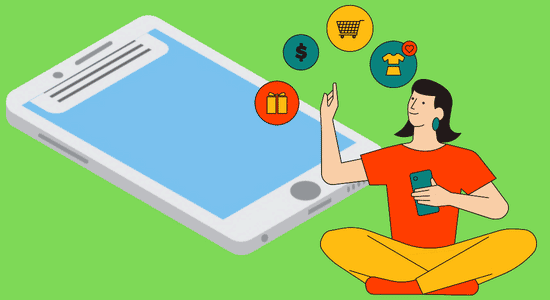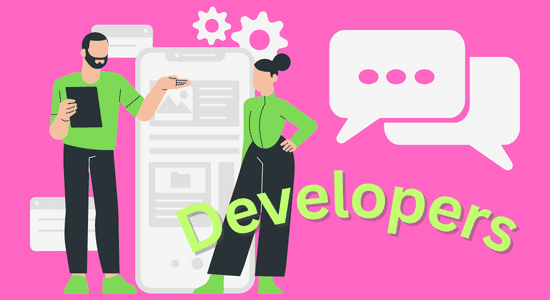UX designers are responsible for creating a positive user experience by considering the factors that influence how people use, interact with, and perceive digital products. So to excel in this field, UX designers must possess certain skills and knowledge.
Understanding of user research techniques, information architecture principles, interaction design concepts, usability testing fundamentals and visual communication strategies. How to acquire these essential skills through resources such as online courses or workshops.

What is UX Design?
User experience (UX) design is a design of usability. No matter how a product looks great or appears to be innovative, it’s meaningless if users cannot have a good experience with it. So UX design involves techniques such as market research, user testing, and prototyping to create an overall strategy for enhancing the user experience with a product.
It means that UX designers are often expected to understand how users interact with technology. They must be able to think creatively to solve problems and develop elegant solutions that are both functional and appealing to users. In addition, they must be excellent communicators, able to clearly articulate their vision for a product and collaborate effectively with other team members.
Ultimately, a great UX designer is someone who cares deeply about creating products that people will love using. If you’re passionate about making things that are both beautiful and easy to use, then a career in UX design might be right for you.
What Does a Day in the Life of a UX Designer Look Like?
A typical day in the life of a UX designer might involve working on a variety of projects at once. They might start the day by meeting with clients (online or offline) to discuss their needs for a project.
Then they would spend time researching, wireframing, and prototyping possible solutions. Once a client has approved a design, the UX designer would begin working on the final product.
Throughout the day, they would also spend substantial time testing and iterating on their designs to make sure they are user-friendly and effective. At the end of the day, they would document their work and share it with clients or team members.
The Different Types of UX Designers
There are many different types of UX designers, each with their own unique skill set and day-to-day responsibilities. Here are a few of the most common types of UX designers:
1. User Researchers
User researchers conduct user studies and interviews to gain insights into how people use and interact with products. They use this information to help design better user experiences.
2. Information Architects
Information architects create the structure and navigation for websites and applications. They make sure that users can find the information they need quickly and easily.
3. Interaction Designers
Interaction designers create designs for how users will interact with products. They focus on creating intuitive and easy-to-use interfaces.
4. Visual Designers
Visual designers create the overall look and feel of products. They choose colors, fonts, and other visual elements to create an aesthetically pleasing experience for users.
What Makes a Successful UX Designer?

A successful UX designer possesses a combination of skills, traits, and experience. Here are some of the key elements that make a successful UX designer:
- User empathy: A successful UX designer understands and empathizes with the user's needs, goals, and challenges.
- Design thinking: They have a problem-solving approach that focuses on the user's needs and preferences. This helps them create designs that are intuitive, user-friendly, and aesthetically pleasing.
- Creativity: A successful UX designer is creative, and they have a strong sense of design aesthetics. They use this creativity to create engaging and visually appealing designs.
- Technical skills: They have a strong understanding of design software, prototyping tools, and coding languages. This enables them to create high-fidelity designs and functional prototypes.
- Communication skills: A successful UX designer is an excellent communicator. They are able to articulate design decisions, explain design concepts, and collaborate with other designers, developers, and stakeholders.
- User research: They conduct thorough user research to understand the user's behavior, preferences, and needs. This helps them create designs that are tailored to the user's needs.
- Continuous learning: A successful UX designer is always learning and staying up-to-date with the latest design trends, tools, and technologies.
I will now elaborate on these points a little bit more.
Empathy
Empathy is a critical skill for every successful UX designer. Empathy allows designers to put themselves in their users' shoes and understand how they think, feel, and behave. This understanding is essential for designing user experiences that are intuitive, helpful, and satisfying.
Designers with strong empathy skills are able to see the world from their users' perspectives and understand their needs. They know how to design user interfaces that are easy to use and navigate. They also know how to create designs that meet users' emotional needs as well as their functional needs.
Designers who lack empathy skills may create designs that are confusing or frustrating for users. They may also have difficulty understanding why users behave the way they do. As a result, they may design user experiences that are unsuccessful or unsatisfying.
Get DesignEvo Now For 10% Off: Code DESIGNEVO10OFF
User-Centered Thinking
User-centered thinking is another key skill for any UX designer. It involves understanding the needs and wants of users and designing solutions that meet those needs. User-centered thinking also involves being able to empathize with users and seeing things from their perspective. This skill is essential for creating designs that are user-friendly and easy to use.
Visual Communication
UX designers must also be able to communicate their designs to stakeholders, developers, and other members of the design team. They must also be able to understand the feedback they receive and use it to improve their designs.UX designers must have strong visual communication skills to be successful. They need to be able to clearly explain their designs to others and understand the feedback they receive. Strong visual communication skills help UX designers create better designs that meet the needs of users.
Technical Acumen
Technical acumen refers to a person’s ability to understand and work with complex technical concepts and systems. You are expected to be able to quickly learn new technologies and understand how they can be used to improve the user experience. You should also be familiar with a variety of software tools and have experience working with different types of data.
Creating Personas
A persona is a composite sketch of a key segment of your users. It includes information about their goals, values, and frustrations. Creating personas helps you to design for your users’ needs by giving you a fictional character to empathize with and understand.
When creating personas, it’s important to use data from your user research. This could come from interviews, surveys, focus groups, or other sources. Once you have this data, you can start to build out your persona by creating a profile that includes:
- Demographic information: age, gender, location, etc.
- Psychographic information: interests, attitudes, motivations
- Behavioral information: how they use your product or service
- Goals: what they want to achieve
- Values: what’s important to them
- Frustrations: what causes them pain points?
Once you have all this information fleshed out, you can give your persona a name and photo. This will help bring them to life and make them easier to reference as you’re designing your product.
Wireframing and Prototyping
Wireframing is the process of creating a visual representation of the layout and structure of a website or application. Wireframes typically include basic shapes and placeholders for content, buttons, menus, and other user interface (UI) elements. Wireframes help designers to define the hierarchy of information, establish the flow of the user interface, and identify potential usability issues early in the design process.
Prototyping, on the other hand, involves creating an interactive mockup of a website or application that simulates user interactions and demonstrates the functionality of the product. Prototypes can range from low-fidelity paper sketches to high-fidelity digital mockups with advanced animations and interactions. Prototypes are valuable because they allow designers to test their assumptions, gather feedback from users, and iterate on the design before moving on to the development phase.
Both wireframing and prototyping techniques help UX designers ensure that the final product meets the needs of the user and provides a seamless and intuitive experience. They help designers test and refine the design, designers can create a product that is both functional and aesthetically pleasing, and that meets the needs of the user.
Testing User Flows
Some of the main testing methods include;
- Usability testing: A method of testing how easy it is for users to use a particular interface or design. This can be done by having users complete tasks while being observed, or by asking them questions about their experience afterwards.
- A/B testing: A method of comparing two different versions of an interface or design to see which one performs better. This can be done by conducting surveys with users, or by measuring the number of clicks or conversions generated by each version.
- User research: A method of gathering information about users’ needs, wants, and behaviours. This can be done through interviews, focus groups, or online questionnaires.
Designing for Different Devices

A versatile UX designer should be able to design for both mobile and desktop devices, as well as any other devices that may be used to access your product or service. They will also be able to understand the different user needs and expectations of each device and adapt their designs accordingly.
With the ever-increasing popularity of mobile devices, all UX designers must have a good understanding of how to design for them. This includes knowing how to create responsive designs that look good on both small and large screens. It also includes understanding the limitations of mobile devices and how to work around them.
Similarly, for voice-controlled assistants such as Amazon Alexa and Google Home, creating designs that are easy to navigate using only voice commands becomes a UX designer's significant role. It also means taking into account the fact that users may not always have their hands free when using these devices.
Creating a Style Guide
A style guide is a document that outlines the design elements of your product or service, including your brand’s colors, fonts, and overall look and feels.
Creating a style guide ensures that your product or service has a consistent appearance across all touchpoints, from your website to your social media accounts to your marketing collateral. It also makes it easier for other designers to work on your project, since they’ll have a clear reference to follow.
If you’re creating a style guide for the first time, start by determining the purpose of your guide. What do you want it to accomplish? Once you know that, you can start brainstorming what should be included. Here are some common elements of style guides:
- Logo usage: Include guidelines on how and when to use your logo, as well as different versions (e.g., color, black and white, reverse).
- Color palette: Specify which colors are part of your brand identity and how they should be used.
- Typography: Choose the fonts that represent your brand and outline when and how to use them.
- Voice and tone: Define how you want your brand to sound across different channels. This might include using specific language or addressing certain topics in a certain way.
- Visual assets: Select photography or illustration styles that fit with your brand identity.
Working with Developers
As a UX designer, you should be able to clearly articulate your designs and explain why certain decisions were made. Developers are often more logical thinkers and may not always see the same creative vision that you do. It is your job to convince them that your design is the best solution for the problem at hand.

Collaboration
The ability to work with others to create a user experience that meets the needs of all parties involved is essential to success in this field.
Good collaboration requires effective communication, as well as an understanding of each other's strengths and weaknesses. It's also important to be able to compromise when necessary and respect each other's opinions.
Building strong working relationships with colleagues, clients, and other stakeholders is essential for any UX designer who wants to be successful. By collaborating effectively, you can ensure that everyone is on the same page and working towards a common goal.
How Much Can a UX Designer Make?
The salary of a UX designer can vary depending on various factors such as location, experience, and industry. Generally, UX designers can earn a competitive salary that can range from $60,000 to over $150,000 per year.
According to the United States Bureau of Labor Statistics (BLS), the median annual wage for graphic designers, which includes UX designers, was $56,510 as of May 2020. However, salaries can vary widely depending on location and industry. For example, UX designers in the tech industry or in large metropolitan areas may earn higher salaries than those in other industries or rural areas.
According to Glassdoor, the average base salary for a UX designer in the United States is $97,900 per year, while senior UX designers can earn upwards of $125,000 per year. The salary can also vary depending on the specific skills and expertise of the designer, with those who have specialized skills such as user research or information architecture commanding higher salaries.
In summary, the salary of a UX designer can vary based on many factors, but the industry, location, and level of experience are key factors in determining compensation.
How to Become a UX Designer
To become a UX designer, you typically need a combination of;
- Education: While a formal degree is not always required, many UX designers have a bachelor's or master's degree in design, human-computer interaction, psychology, or a related field. Some universities and colleges offer specialized UX design programs.
- Skills: UX designers should have a strong background in design, including knowledge of design software such as Sketch, Figma, Adobe Creative Suite, or others. They should also be familiar with user research techniques, information architecture, and interaction design principles. Good communication, collaboration, and problem-solving skills are also essential.
- Experience: UX designers may gain experience through internships, entry-level positions, or freelance work. A portfolio of design work that showcases their skills and experience is often required to demonstrate their abilities to potential employers.
- Certifications: Some organizations offer certification programs that can demonstrate a UX designer's expertise, such as the Certified Usability Analyst (CUA) or Certified User Experience Professional (CUXP) certifications.
Continuous learning, staying up-to-date with industry trends, and building a strong portfolio can also help UX designers stand out in the job market.
Designing for User Experience: The Journey of a UX Designer - Conclusion
As you can see, UX designing is a very complex field that requires a great deal of skill and experience to be successful. I hope this article has helped you understand the key skills required for success in this role, as well as given you some insights into how to develop these skills further. With an eye for detail, strong communication abilities, problem-solving capabilities, analytical thinking and data visualization expertise, any aspiring UX designer can become successful in their chosen career path!
120+ Design Services by Penji
15% off the first month with the promo code CYBERCASH15

Don't forget to use the promo code!
